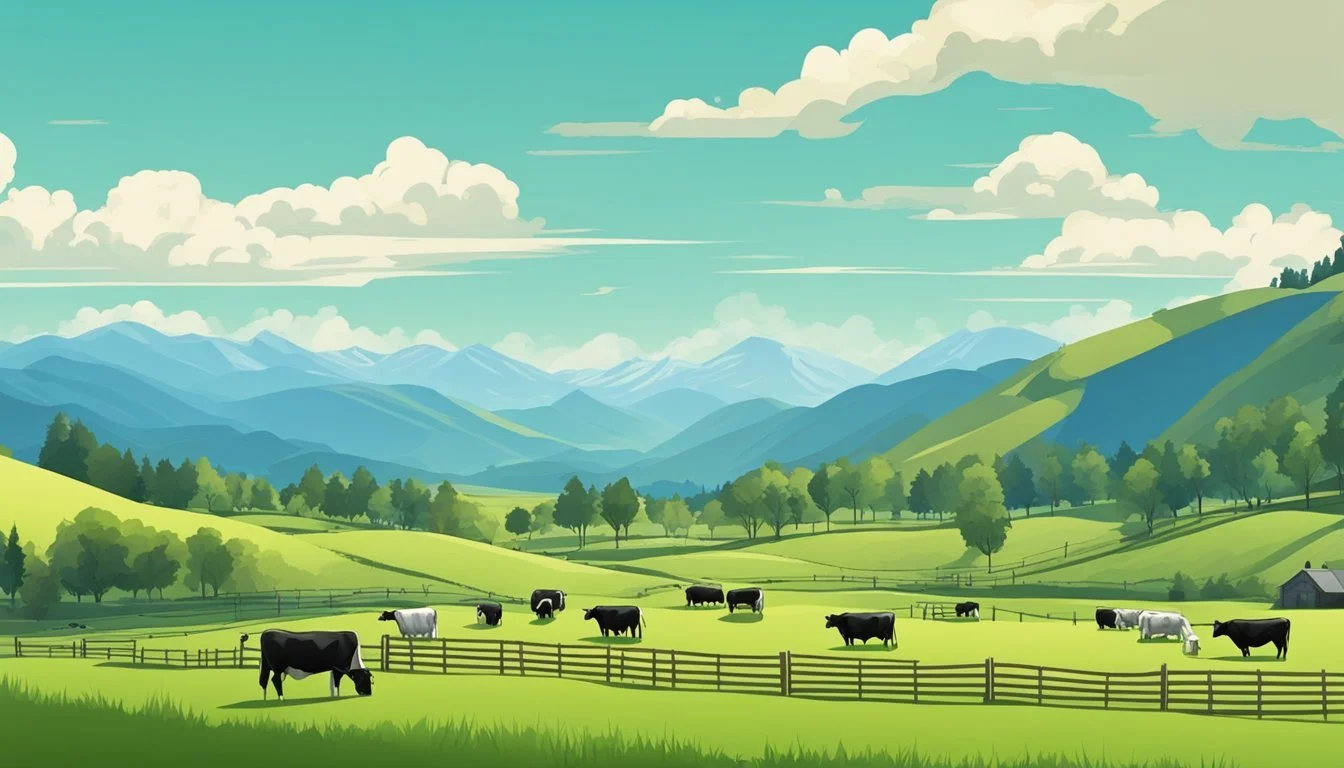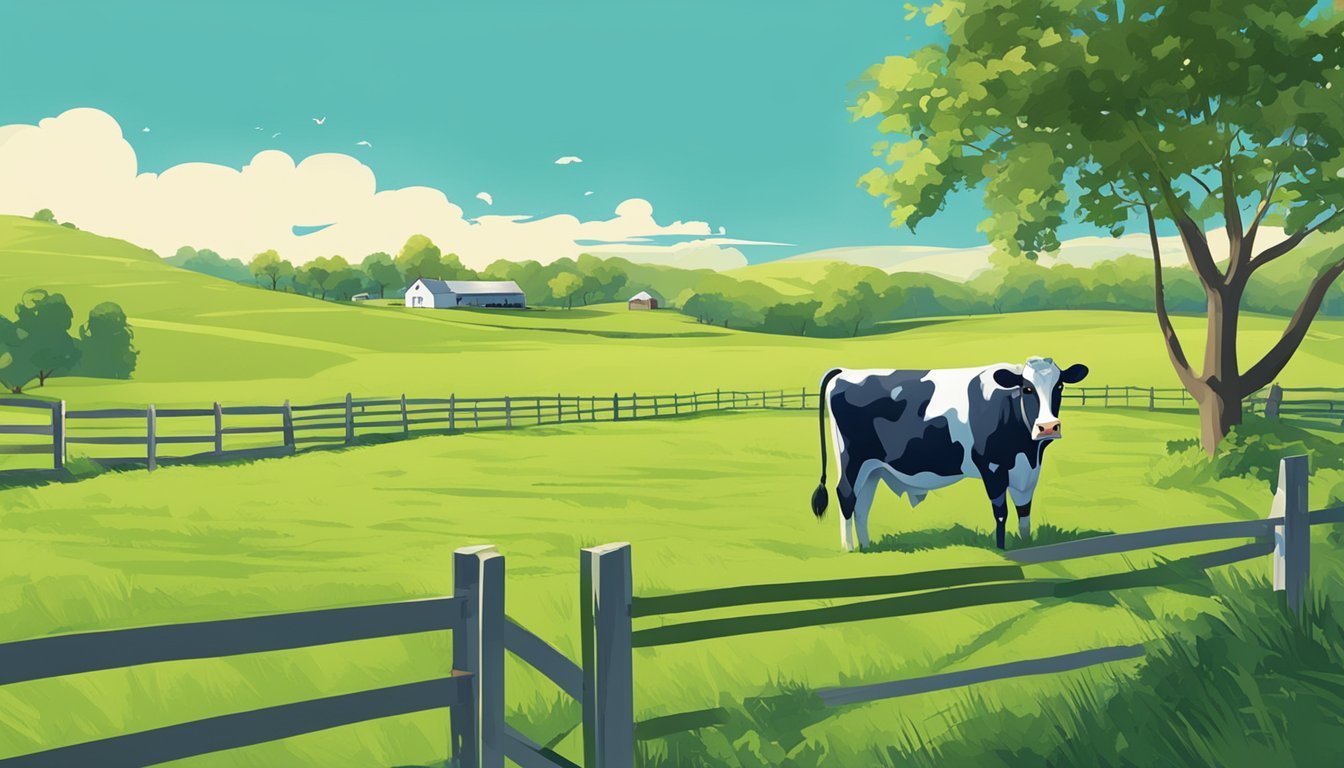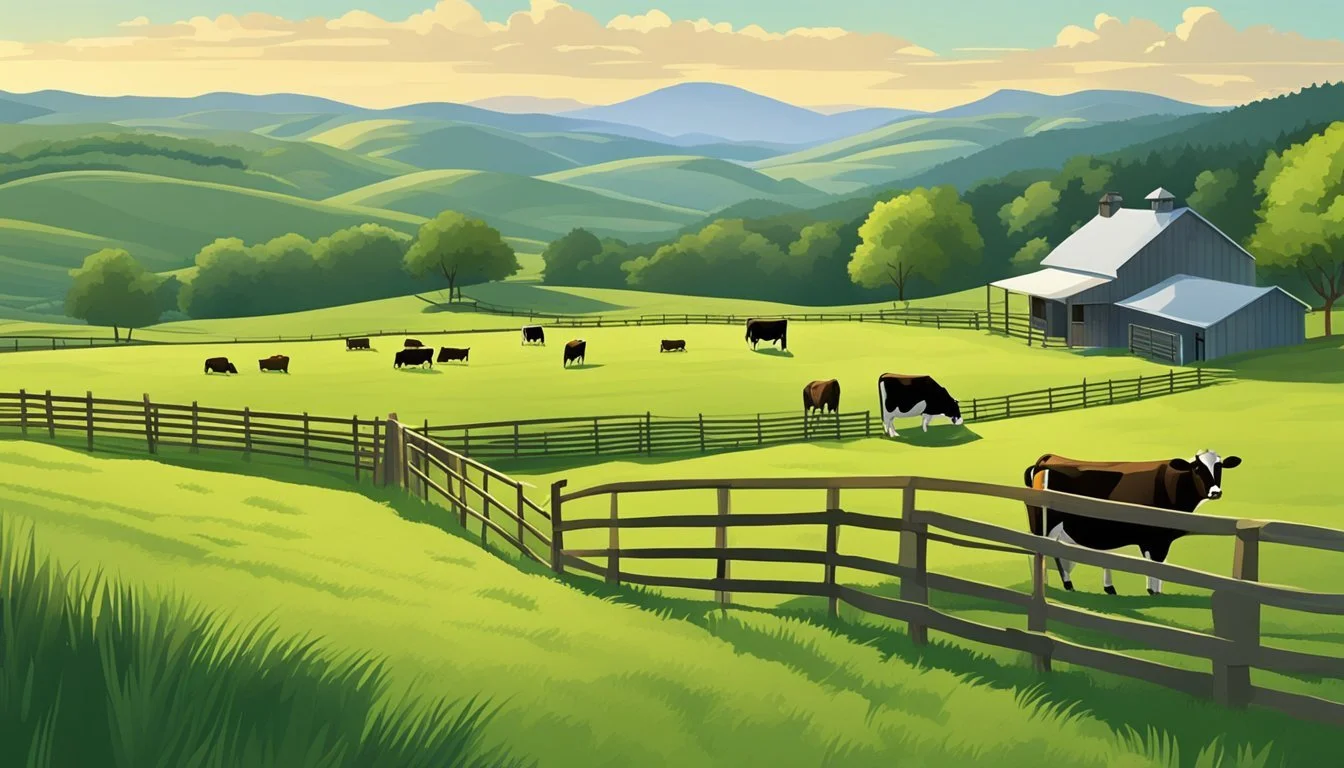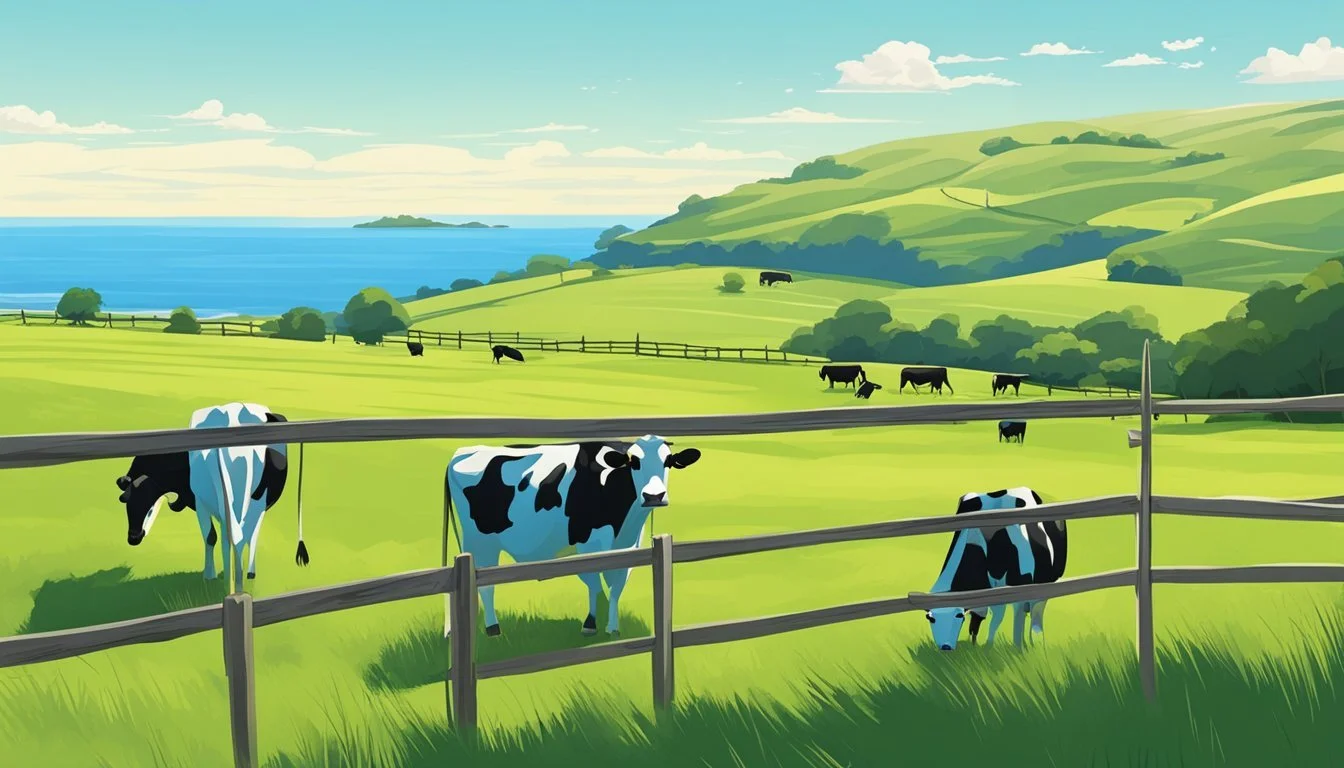Stocking Rate Hawaii
Determining Sustainable Cow Density Per Acre
When determining the appropriate stocking rate in Hawaii, it is imperative to consider various ecological and management factors to ensure the health of both land and livestock. The concept of 'stocking rate' refers to the number of animals a given tract of land can support without causing environmental degradation. The unique climate, soil types, and vegetation of Hawaii's diverse ecosystems mean that the stocking rate can vary significantly from one property to another.
In Hawaii, the exact number of cows per acre that a property can support is influenced by factors such as rainfall, forage type and productivity, and management practices. Adequate water supply, nutrient management, and rotational grazing all play crucial roles in maintaining a sustainable balance between cattle and pasture resources. Landowners in Hawaii must carefully assess these components to establish a stocking rate that will not exhaust natural resources or harm the environment.
It is recognized that overstocking can lead to severe consequences like soil erosion, reduced forage availability, and compromised animal health. To avoid such outcomes, livestock owners must obtain an accurate estimate of the carrying capacity for their specific acreage. This involves an assessment of the average weight of the cattle, the quality and quantity of forage available, and the overall length of the grazing season in their localities. By adhering to these considerations, sustainable stocking rates can be determined, ensuring the long-term productivity of Hawaii's pastoral lands.
Understanding Stocking Rates
Stocking rate is a critical component for sustainable cattle grazing, directly affecting both the health of the land and the productivity of a farm.
Defining Stocking Rate
Stocking rate is the number of animals per acre that can be supported by a parcel of land without causing environmental degradation. It is often expressed in Animal Units (AU), which standardizes animals of different types and sizes. In Hawaii, due to its unique climate and forage availability, stocking rates can widely vary. For example, one AU is typically defined as a 1,000-pound cow.
Key Factors Influencing Stocking Rate
Several factors impact the stocking rate of a property:
Forage Demand: The amount and nutritional quality of forage required by the livestock.
Available Forage: Actual forage produced which varies seasonally and with management practices.
Duration: The length of time livestock graze on a property.
Land in Hawaii may support different stocking rates depending on local climate patterns and forage types.
Assessing Carrying Capacity
Carrying capacity refers to the maximum number of animals a land can support without causing resource depletion. An Animal Unit Month (AUM) is the amount of forage an AU requires for one month. Assessing carrying capacity is a process that involves:
Determining the total acreage available for grazing.
Estimating annual forage production in the area.
Calculating the total forage demand by considering animal size and number.
In Hawaii, these values can help landowners ascertain how many cows per acre their property can support sustainably.
Cattle Management Principles
When managing cattle in Hawaii, understanding and applying specific management principles related to stocking rates, grazing methods, and season planning are essential. These practices ensure sustainable land use and optimum cattle health and productivity.
Importance of Stocking Rate Management
Stocking rate management is crucial in cattle farming as it dictates the number of cattle that can be supported per acre without degrading the land. In Hawaii's unique ecosystem, accurate stocking rates are determined by forage availability, which may be influenced by factors such as precipitation and soil fertility. Effective management maintains a balance between the number of cattle and available forage, preventing overgrazing and fostering regeneration.
Rotational Grazing vs. Continuous Grazing
Rotational grazing involves dividing pastures into smaller areas and moving cattle regularly between them. This practice allows forage plants to recover before being grazed again, promoting better pasture health and potentially increasing stocking rates. In contrast, continuous grazing keeps cattle in a single pasture for the entire grazing season, which can lead to uneven utilization of forage and might require a lower stocking rate to maintain pasture condition.
Rotational Grazing:
Supports forage regrowth
Can enhance soil quality
Potentially increases stocking density
Continuous Grazing:
Requires careful monitoring
May be less labor-intensive
Can reduce forage regrowth if poorly managed
Grazing Season Planning
The grazing season in Hawaii is influenced by its tropical climate, which can allow for longer grazing periods. However, planning is still needed to align cattle nutritional needs with forage growth patterns. Proper planning includes understanding plant growth cycles and adapting the stocking rate accordingly. This ensures that cattle have adequate forage throughout the year while maintaining the health of the pasture.
Forage and Pasture Management
In Hawai'i, the success of cattle grazing relies heavily on effective forage and pasture management practices. These practices are essential for maximizing yield, assessing forage quality, and ensuring the overall health of pastures.
Maximizing Forage Yield
To maximize forage yield on Hawai'i's pastures, it's critical to implement rotational grazing. This approach allows forage to recover between grazing periods, leading to improved productivity and sustainability. Factors such as rainfall, soil fertility, and invasive species control significantly influence yield outcomes. It's recommended to tailor grazing schedules based on local conditions to enhance forage growth.
Forage Quality Assessment
Forage quality directly impacts cattle health and growth rates. Regular testing of nutrient content, including protein levels and energy density, is necessary to ascertain forage quality. They should also monitor for the presence of any toxins or detrimental compounds that could affect cattle health. For instance, certain forage types in Hawai'i may require testing for problems unique to the region's flora.
Pasture Health and Improvement
Maintaining pasture health involves monitoring soil conditions, controlling invasive species, and ensuring adequate water supply. Overgrazing must be avoided to prevent soil compaction and erosion, which can detrimentally affect forage yield and quality. Practices such as reseeding and applying the right fertilizers can aid in improving the productivity and resilience of the pasture ecosystems over time.
Environmental Considerations
When determining the stocking rate for cattle on land in Hawaii, it is crucial to account for several environmental factors that can influence pasture productivity and sustainability. This section provides specific guidance on soil conservation, managing the impact of precipitation, and promoting biodiversity, which are essential considerations for maintaining a healthy ecosystem.
Soil Conservation and Health
To support a desired stocking rate, maintaining soil health is vital. Hawaii's soils can be highly variable, with some areas being more prone to erosion and nutrient depletion. Soil conservation practices involve regular testing to monitor soil quality and fertility, employing rotational grazing to prevent overgrazing, and allowing periods of rest for pasture recovery. Additionally, using cover crops and implementing contour plowing can reduce soil degradation significantly.
Managing Precipitation Impact
Precipitation in Hawaii varies greatly, with annual precipitation ranging from 20 to 300 inches depending on the location. The management of water runoff and preventing soil compaction are key for pastures. Constructing proper drainage systems to handle heavy rainfall and avoid pooling is crucial to prevent both erosion and the potential for turning fertile land into mud pits that cannot support grazing.
Promoting Biodiversity and Preventing Desertification
Promoting biodiversity in pastureland involves integrating a variety of forage species to support a broad range of wildlife and improve soil structure. This diversity helps to prevent desertification, a form of land degradation in which fertile land becomes increasingly arid. Practices such as maintaining buffer zones around waterways and minimizing the use of chemical fertilizers and pesticides contribute to a balanced ecosystem, supporting both livestock and the natural flora and fauna of Hawaii.
Livestock and Breed Factors
The stocking rate in Hawaii can vary greatly depending on the type of cattle and breeds involved. Specific breeds have different grazing requirements and can influence the number of cows per acre your property can support.
Determining Suitable Cattle Type
When choosing the cattle type for a livestock operation in Hawaii, one must consider the climate and forage availability. Dairy cattle, for instance, may have higher nutritional requirements than beef breeds. A property might support fewer dairy cows per acre due to their need for rich pasture to produce milk efficiently.
Calculating Livestock Units
A Livestock Unit (LU) is a standard used to compare the feed requirements of different sizes and types of livestock. For example, one LU can represent one adult cow, regardless of breed. However, a cow/calf pair might be calculated as 1.5 LUs given the additional resources required for nurturing the calf.
Example Calculation:
1 adult cow = 1 LU
1 cow/calf pair = 1.5 LUs
Adjustments are made based on breed-specific factors such as weight and growth rates.
Custom Stocking Options for Diverse Breeds
Different cattle breeds have varying tolerances to environmental conditions and forage types. A custom option for stocking might involve mixing breeds to optimize pasture usage. For instance, a hardier breed can be introduced to utilize less palatable forage, reducing the pressure on more choice areas of the pasture and allowing for increased overall stocking rates.
Economic Implications of Stocking
Stocking rate is a pivotal factor determining the economic viability of a livestock operation. The balance between the number of head of cattle per acre and the output in terms of livestock production can significantly sway profitability margins.
Stocking Rate and Profitability Relationships
The correlation between stocking rate and profitability in beef cattle operations is both crucial and complex. A lower stocking rate may result in better forage availability per head of cattle, potentially leading to improved animal health and growth rates. Conversely, higher stocking rates can increase revenue through a greater number of cattle sold, but this approach risks overgrazing, which may degrade pasture quality, incur higher feed costs, and potentially reduce profitability due to increased management interventions required. In Hawaii's unique environment, where forage production and climate can vastly differ from continental contexts, optimal stocking rates can indeed diverge from broader averages.
Optimal stocking rate: Determined by localized forage availability and growth patterns.
Revenue growth: Tied to an increased number of sales when higher stocking rates are sustainable.
Risk of overgrazing: Elevated with higher stocking rates, leading to potential long-term economic detriment.
Cost-Efficiency in Livestock Production
Cost-efficiency in livestock production is directly influenced by the stocking rate, which dictates the cost per head of cattle from birth to sale. In regions like Hawaii where land is at a premium, maximizing the number of head of cattle per acre without compromising the land's productivity is essential for maintaining low production costs and high profitability. Rotational grazing, a practice that involves moving cattle between pastures to allow for regrowth of forage, can be a cost-effective strategy, as it improves pasture utilization and reduces the need for supplemental feed.
Land utilization: Critical in high-value areas; optimal stocking improves land use efficiency.
Rotational grazing: Can enhance forage utilization, reduce supplementary feeding costs, and support a higher stocking rate without pasture degradation.
Supplemental feed: Could become a significant cost if stocking rates exceed the carrying capacity of the land.
By managing stocking rates effectively, farmers can structure their operations for economic stability, ensuring that each acre utilized contributes to a financially sustainable model for beef cattle production.
Practical Strategies for Stocking Rate Optimization
Achieving optimal stocking rates on a Hawaiian property depends on strategic grazing management, consistent environmental monitoring, and diversifying the types of grazing livestock. Implementing these practices effectively can lead to a more sustainable and productive property.
Establishing Effective Grazing Methods
Implementing rotational grazing can increase forage availability and improve grazing distribution across a property. The process involves dividing pastures into smaller paddocks and moving livestock between them to allow forage plants to recover. Key points include:
Controlled Grazing: Schedule grazing to maximize growth cycles of local plant communities, reducing overgrazing.
Infrastructure: Invest in adequate fencing and water systems to manage grazing patterns and distribution.
Monitoring and Adjusting to Environmental Changes
It's essential to monitor soil and forage conditions, adjusting stocking rates accordingly to prevent land degradation. Consider these aspects:
Drought Management: Reduce stocking rates during drought conditions to minimize trampling and overgrazing of stressed plant communities.
Soil Health: Regular soil tests can indicate when to alter grazing intensity or rest pastures to maintain soil quality.
Incorporating Multi-Species Grazing for Sustainable Practices
Multi-species grazing, where different types of livestock graze the same area, maximizes pasture use and controls weed growth. The practice considers:
Complementary Grazing Patterns: Different species prefer different plant types, which can improve overall forage use.
Pest and Disease Control: Multi-species grazing can break the cycle of species-specific pests and diseases, promoting healthier pastures.
Challenges in Stocking Rate Determination
Stocking rate determination in Hawaii is a complex task that necessitates a thorough understanding of local conditions and management techniques. The process often involves a balance between animal demand and available forage to avoid land degradation or reduced productivity.
Dealing with Overgrazing Risks
Overgrazing poses a significant risk to pasture health and can lead to long-term losses in forage production. Stocking rate directly impacts the potential for overgrazing; too many cows per acre strip the land of vegetation faster than it can regenerate. Cattle producers in Hawaii must assess pasture recovery rates alongside the number of cows they introduce to a parcel of land to mitigate overgrazing.
Managing Degraded Pastures and Soil Erosion
Degraded pastures present many challenges for establishing an appropriate stocking rate. Areas with degraded pasture often suffer from soil erosion due to insufficient plant cover and root systems. Restoring these pastures requires a decrease in stocking density and the implementation of soil conservation practices, such as planting cover crops or implementing rotational grazing to encourage the return of native grasses.
Adapting to Climate Variability
Hawaii's climate is known for its variability, which can include fluctuations in rainfall and temperature. These climate variations can affect forage availability and quality, thus influencing the stocking rate. Farmers and ranchers need to be attuned to climate patterns and prepare to adjust their stocking rates accordingly. Failure to do so can put undue stress on pasture resources during periods of drought or excessive rainfall that could result in further soil degradation.







